In putting together a collection of the Chemistry Department’s pioneering contributions that have changed the course of chemistry (designated as “Departmental FIRSTS”), I was drawn to looking into earlier eminent chemists whose work transformed the development of our discipline. Then, coincidentally, a little while later I was asked by a university library to provide some details of my previous research supervisors and the research that I did with them for my doctoral and postdoctoral studies. This prompted me to continue backwards to explore my own academic family tree to see who my academic grandparents, great-grandparents, cousins, etc. were, and what their influences on chemistry had been.
I went back as far the mid 1700s, exploring multiple branches. The results staggered me in that, taking both direct and distant relatives into account, I found myself “academically related” to a large number of famous chemists, including many Nobel laureates. (Nobel prizes were first awarded in 1901, so the deserving chemists listed below who worked prior to that date did not qualify).
Among the prominent names in my direct line were “grandfather” Robert Robinson (a giant of organic synthesis and arguably the initial father of physical organic chemistry – he invented the curved arrow of our reaction mechanisms, Nobel Prize 1947); “great-grandfather” William H. Perkin Jr (terpene chemistry); “greatgreat-grandfather” Adolf von Baeyer (first to synthesize indigo, Nobel Prize 1905), with his student Emil Fischer (carbohydrate and protein chemistry, first synthesis of barbiturates, and the “lock-and-key” concept of enzyme-substrate specificity, Nobel Prize 1902) as a “greatgreat-uncle”; Robert Bunsen ( who invented his burner to enable him to get alkali metal spectra, and discoverer of caesium and rubidium); August Kekule (who recognized the tetravalency of carbon and formulated the structure of benzene); Friedrich Wohler (who proved that formation of organic compounds did not need a vital life-force by his preparation of organic urea from inorganic ammonium cyanate); and even Jons Jacob Berzelius ( a “(great)5-grandfather”, regarded as one of the founders of modern chemistry in the early 18th century, who originated the terms isomers, polymers, and catalysis, was the inventor of our letter chemical notations for elements, e.g. H, Na, Fe, O, N, etc., and of molecules, but using superscript numbers, e.g. H2O, instead of the current subscripts, and discoverer/identifier of at least six elements. Interestingly, an old print of Berzelius, signed by him, is in the Chair’s Office). I even found recent eminent chemists to be very close relatives, with Derek Barton (Nobel prize for conformational analysis 1969) being my academic “brother”, and Jack Baldwin (Baldwin’s rules) my academic ”nephew”. Perhaps most significantly, I discovered recently that our Departmental Chair, Rob Batey, is my academic grandnephew!
Needless to say, I was absolutely astounded by what I found, and I am relating all this simply to encourage each of you to explore your own academic family tree. I am sure that you will also be amazed at the extent and eminence of many of your academic relatives. These are easily searched at The Academic Family Tree and also using Wikipedia to amplify the details of the most significant names, since the above link sometimes omits some key “relatives”. The academic family trees of all of our faculty also make for fascinating reading.
Bryan Jones
University Professor Emeritus
bryan.jones@utoronto.ca


